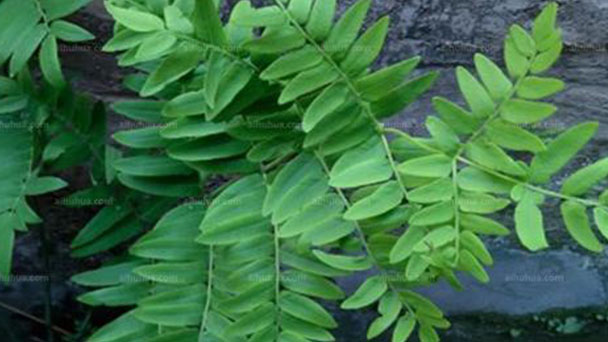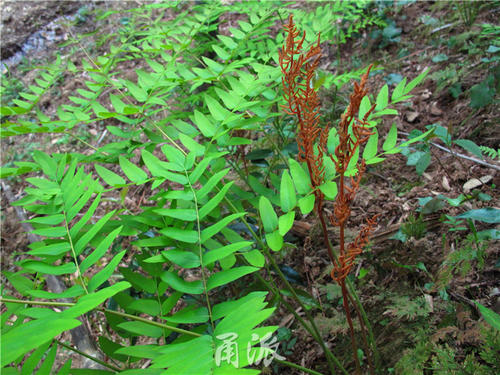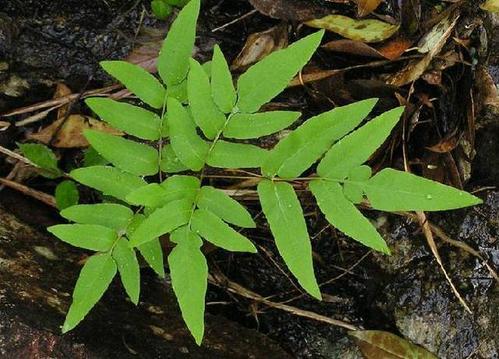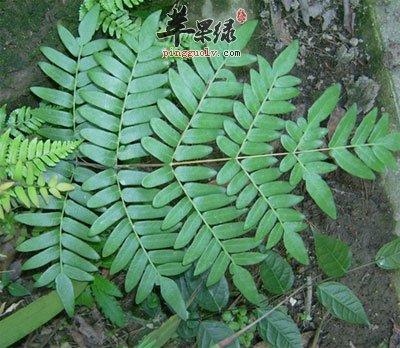Japanese royal fern (Osmunda japonica) profile
Written by Maggie
Mar 08 2021

Japanese royal fern (Osmunda japonica), also known as Asian royal fern, is one of the most common ferns in China's warm temperate and subtropical regions. Japanese royal fern extends from Shandong (Laoshan) in the north to Guangdong and Guangxi in the south, from the sea in the east to Yun, Guizhou and western Sichuan in the west, and reaches the southern slope of Qinling Mountains in the north. Japanese royal fern is also widely distributed in Japan, Korea, northern India (Himalayas).
Japanese royal fern picture

Japanese royal fern plants are 50-80 cm or more tall. Rhizome short and stout, or short trunk-like and slightly curved.
Morphological characteristics of Japanese royal fern
The root
Japanese royal fern plants are 50-80 cm or more tall. Rhizome is short and stout, or short trunk-like and slightly curved.
Leaf
Japanese royal fern leaves are clustered, erect, stalks 20 -- 30 cm long, straw-colored, densely tomentose when young, soon shed; Leaf blade is triangular broadly ovate, 30 -- 50 cm long, 25 -- 40 cm wide, apical pinnate, below the second pinnate; Pinnae 3-5 pairs, opposite, oblong, 15-25 cm long, base 8-11 cm wide, base pair slightly larger, stipe (stalk 1-1.5 cm long), oblique upward, odd-pinnate; Small pinnae has 5-9 pairs, opposite or nearly opposite, sessile, separation, 4 to 7 cm long, 1.5 1.8 cm wide, oblong or long lanceolate, apex obtuse or acute, slightly to the base slightly wide, round, or nearly cross-sectional shape, 1.5 2 cm apart, smaller upwards, the isomorphism, with handle, base often with 1-2 slices hopson rounded lobes, or broadly wearing short 3-lobed, margin with uniform finely serrate.
The veins of japanese royal fern are conspicuous on both sides, oblique upward from midrib, bifurcated, and the veins parallel to serrate.
The leaves of Japanese royal fern are papery, smooth and glabrous when grown, brownish green when dried. Sporophylls (fertile leaves) as tall as vegetating leaves, or often slightly taller, pinnules and pinnules shortened, linear, 1.5-2 cm long, densely sporangia along the dorsal side of the middle rib.
Ecological habits of Japanese royal fern
Japanese royal fern grows on acidic soil under trees or by streams. Leaf spores between spring and summer out, dark brown, mature after dying.

The distribution area of the Japanese royal fern
Japanese royal fern is one of the most common ferns in China's warm temperate and subtropical regions. Japanese royal fern extends from Shandong (Laoshan) in the north to Guangdong and Guangxi in the south, from the sea in the east to Yun, Guizhou and western Sichuan in the west, and reaches the southern slope of Qinling Mountains in the north. Japanese royal fern also widely distributed in Japan, Korea, northern India (Himalayas).
Japanese Royal Fern is distributed in Gansu, Shandong, Jiangsu, Anhui, Zhejiang, Jiangxi, Fujian, Henan, Hubei, Hunan, Guangdong, Guangxi, Sichuan, Guizhou, Yunnan and other provinces.
Japanese royal fern uses
Healthcare value
The young leaves of Japanese royal fern are edible. The wire-like fibrous roots are the culture agent for epiphytes.
In spring, the young leaves of the boxing roll are picked and fried with meat, delicious. Japanese royal fern can be dried into dried vegetables or salted
Garden use of Japanese royal fern
Japanese royal fern leaves have clear veins and tender green leaves that are translucent in the sun. They are best grown poolside, in trenches or in pots. Young leaves are excellent vegetables, and dead rhizomes are an excellent substrate for epiphytes. It can also be used as medicine.

Latest Updated
- Benefits of Bugleweed - 7 Science-backed Health Benefits
- Bugleweed Dangers & Side Effects - Is It Poisonous?
- How to Plant Evergreen Trees - What You Should Know
- When to Plant Evergreens - Grow Guide for Evergreen Trees
- 12 Wonderful Evergreen Shrubs for Your Garden
- 12 Popular Evergreen Plants with Pictures for Beginners
- When And How To Prune A Lilac Bush Like a Pro
- How to Grow & Care for Lilac Vine (Hardenbergia Violacea)
- Japanese Lilac Tree (Syringa Reticulata) Care & Propagation Guide
- Shumard Oak Pros and Cons - What to Know
Popular Articles
- Winter maintenance of Antirrhinum Majus
- How to Grow Terminalia Mantaly Tree
- How to Grow and Care for Crossostephium Chinense
- How to grow Antirrhinum Majus in spring
- Peristeria Elata (Dove Orchid) Profile: Info & Care Guide
- Underwatered Snake Plant (Sansevieria Trifasciata) - Signs And How To Fix
- How to Care for Brazilian Jasmine Plant (Mandevilla Sanderi)
- How to Grow & Care for Graptopetalum Purple Delight in Summer
- Rosa Chinensis (China Rose): Plant Growing & Care Tips
- How to Care for Baby Sun Rose (Aptenia Cordifolia)